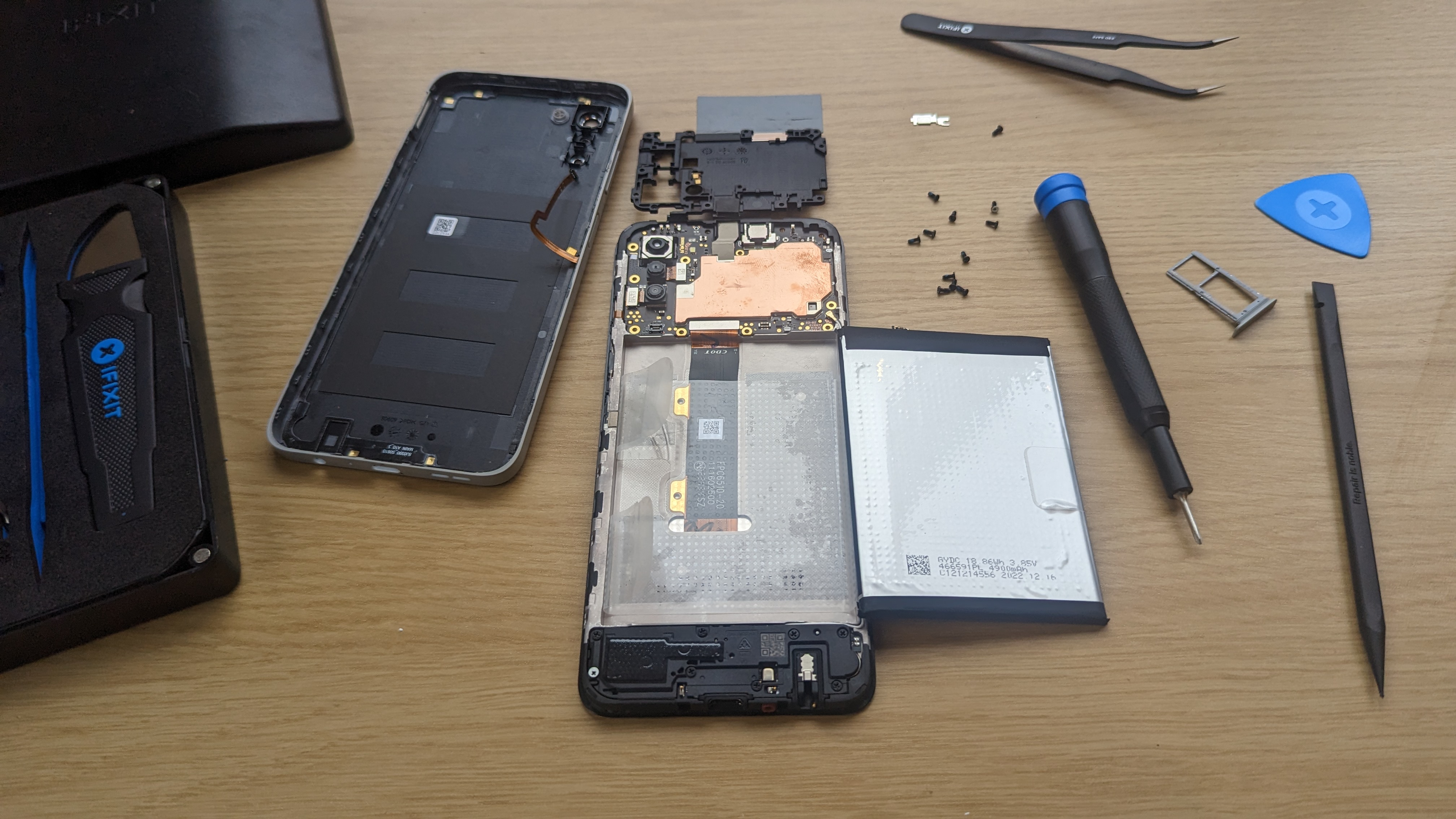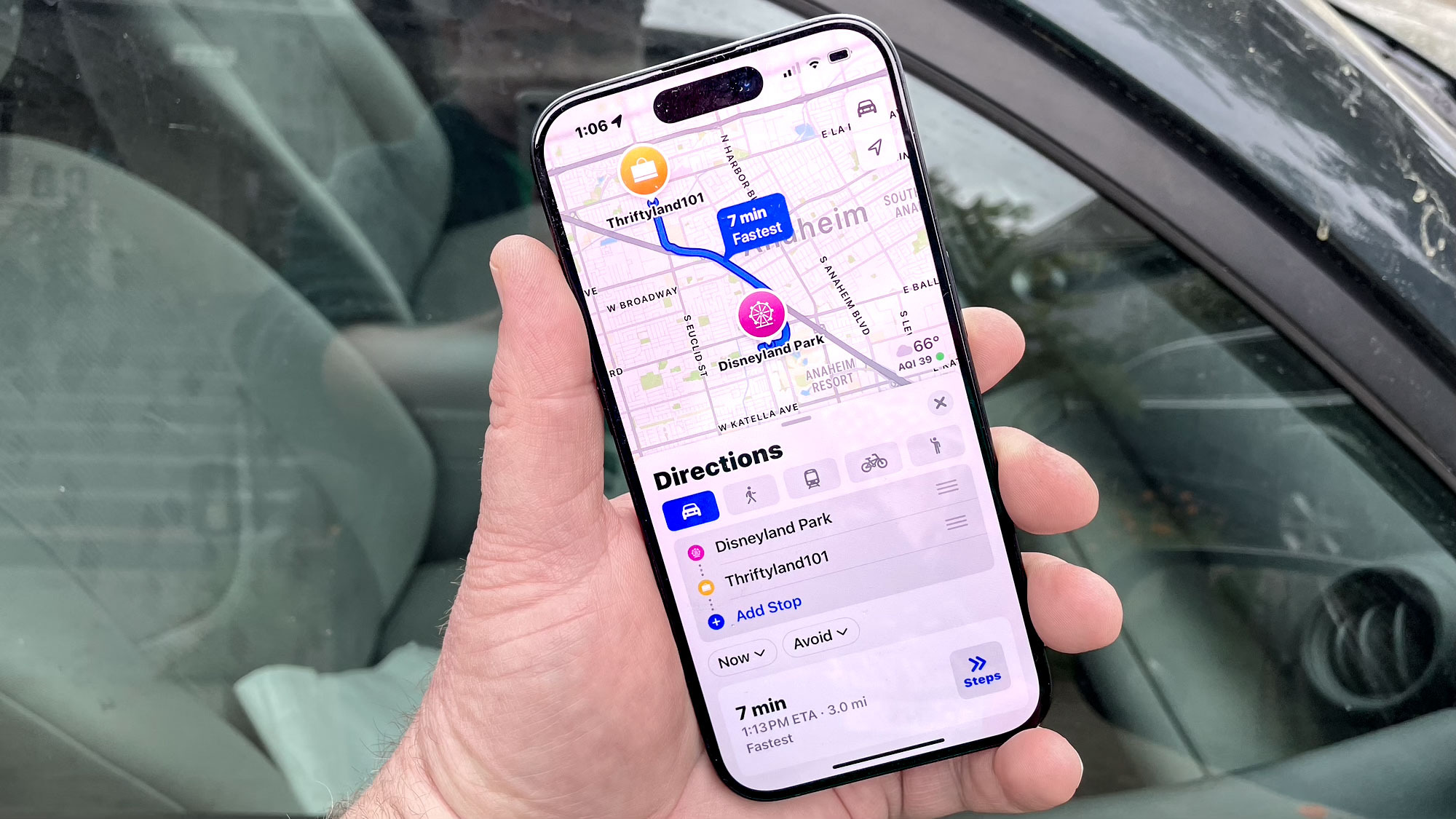I just tried the first Nokia you can repair yourself — here’s what happened
How hard could it be?

The Nokia G22 is a smartphone that’s been built to be easy to repair. Or, more specifically, easy to swap out the battery, charging port and screen. According to Nokia manufacturer HMD, those three components are the most likely to damage or wear out through ordinary use. So, by making these components easier to swap out, people will theoretically be able to keep their phones for longer.
It’s still too early to say how that will play out in practice, but it’s still an important step for the phone industry. But saying a phone is easily repairable and making sure it can actually be done by ordinary people is another matter entirely. So I got my hands on the Nokia G22 and decided to go through a repair myself — following instructions from repair specialists iFixit.
I’ve never actually done a phone repair before. The closest I ever got was taking apart my PS4 to clean dust out of the fan, which felt pretty harrowing at the time. Nobody wants to risk breaking a device that costs a few hundred dollars, even if it is a fairly simple procedure.

If you’ve ever paid attention to the subject of phone repair, you’ll be aware that the process can be excessively complicated to carry out. Notable problems include excessive use of adhesives, waterproofing seals, use of proprietary screws, issues relating to third-party parts compatibility, or specialist software that was only available at “authorized” repair shops.
The Nokia G22 should have been designed so none of those things pose an issue. In fact, according to HMD, it’s possible to swap out the battery in just 5 minutes and the screen in 20. All using a standard set of phone repair tools. So how hard could it be, really?
The Nokia G22 really is simple to take apart

I feel it should be obvious that I did not complete my repair in as short a time as HMD claimed. In fact. the whole process took me roughly 45 minutes. That’s starting with a working phone, disassembling and reassembling everything per the instructions, and finishing off with that phone in much the same condition.
The whole experience wasn’t quite as daunting as I’d feared either. The most awkward part was right at the beginning, which involved disconnecting the back panel with what is, essentially, a thick guitar pick.
It took me a few seconds to get the hang of popping the plastic frame away, and actually getting the pick round each of the phone’s four corners. But it didn’t take long to get this section done, after which the vast majority of the repair work involved a screwdriver and popping various cables out of their sockets.

Let's give credit where it’s due. iFixit’s repair manual was incredibly helpful in this manner. The written instructions were fine, but the sheer number of images covering each tiny step made it incredibly (and quick) to figure out what you were supposed to do next. As a long-time builder of Lego sets and Ikea furniture, I’ve become pretty good at following instructions.
There were a couple of points where I was moving a little too quickly, either slightly misinterpreting the instructions or jumping a couple of moves ahead. Such as the point I disconnected the wrong end of the antennae, or when I removed a screw too early.
It didn’t make any difference in the grand scheme of things, but that kind of haste may have taken a different path if the G22 hadn’t been so easy to take apart.
Even an easy repair has its challenges

One thing I was particularly concerned about during the Nokia G22 repair was whether I’d accidentally damage some of the smaller components. That’s one of the main reasons why I’ve never attempted something like this before, even on older devices I never use anymore. I don’t want to be a little too forceful or careless and wind up breaking off an essential pin, snapping a connector or scratching away some solder.
The battery almost felt like it was glued in, and the adhesive tape it was wrapped in was quite difficult to pull out — leading to plenty of cursing in the process.
I had to try and get over that fear pretty quickly though. The fact is a lot of these components needed a fair bit of force to disconnect and reconnect. Thankfully. the interior components proved to be a lot more durable than they look, or maybe I’m not as freakishly strong as I thought.
Either way, popping stuff out and getting it back in proved to be one of the easiest tasks, just so long as I lined it all up correctly. The antenna’s connector is tiny, and rather tricky to get back in place.
While adhesive on the Nokia G22 was minimal, the stuff that was used could prove to be a little problematic. According to HMD this is because the model I used was a pre-release unit, and used stronger adhesive as a result. The adhesive used on the models you'll buy in a store won't be quite as strong.
Which is a good sign, especially where the battery is concerned. The battery almost felt like it was glued in, and the adhesive tape it was wrapped in was quite difficult to pull out — leading to plenty of cursing in the process.
Repairability is great, but it’s not a major selling point

The G22’s easy repairability does come with some caveats. The phone is rated IP52, which is not great. A dust resistance rating of 5 means “limited ingress of dust” is allowed, so long as it doesn’t interfere with the phone’s operation. Meanwhile. a 2-water resistance rating means you’re protected against “vertical falling drops of water with enclosure tilted up to 15 degrees from the vertical." Which essentially means it’s protected against rain, and not much else.
That’s not great, but it’s not surprising. The G22 is very cheap, and there’s no guarantee that the seals keeping dust and water out won’t become compromised during the repair process. Especially if you’re an amateur like me.
The other thing to consider is that this is a cheap £170 ($208) phone with cheap phone specs. The screen is limited to 720p resolution, there’s only a single speaker, no 5G and you start with Android 12 and just two years of Android updates. Of course, some appealing specs have snuck through, including a 90Hz refresh rate, a 3-day battery life and a 50MP (f/1.8) main camera. But that won’t be enough to satisfy those of you who are used to premium, or even mid-range, handsets.
The limited Android updates seem particularly short sighted. too. HMD claimed that the G22 has been in the works so long it wasn’t able to launch with Android 13, and the limited number of updates is down to the cost of offering more. Sadly, ongoing software support is incredibly important, and improving the longevity of the hardware is only one part of the equation.
Bottom line

The fact that it is rather easy to repair the G22 is a great thing, but that's not going to be the reason people buy the phone. It is absolutely a phone for people who don’t want to spend a lot of money, but maybe want to enjoy a sprinkling of features that were previously out of their price range.
That’s not to say other phone makers shouldn’t make more of an effort to make their phones easier to repair where possible. We’ve already seen the likes of Apple, Samsung and Google start offering more self-repair services, but those services often come with some caveats. Apple’s $49 tool kit rental, which you’re only allowed to have for 7 days, is a very good example of that, as is the cost of buying genuine Apple parts. The parts and tools needed to repair the G22 cost a fraction of that.
The Nokia G22 isn’t going to change the world. Fairphone still hasn’t managed that, and Nokia is far from a major player in the smartphone business. But here’s hoping that this is a sign of things to come, and that right to repair activism is making progress. I dream of a world where smartphone repair is easy and affordable, but that isn’t going to happen overnight.
More from Tom's Guide
Sign up to get the BEST of Tom's Guide direct to your inbox.
Get instant access to breaking news, the hottest reviews, great deals and helpful tips.

Tom is the Tom's Guide's UK Phones Editor, tackling the latest smartphone news and vocally expressing his opinions about upcoming features or changes. It's long way from his days as editor of Gizmodo UK, when pretty much everything was on the table. He’s usually found trying to squeeze another giant Lego set onto the shelf, draining very large cups of coffee, or complaining about how terrible his Smart TV is.
